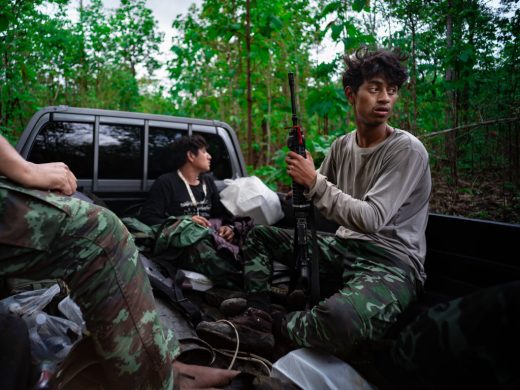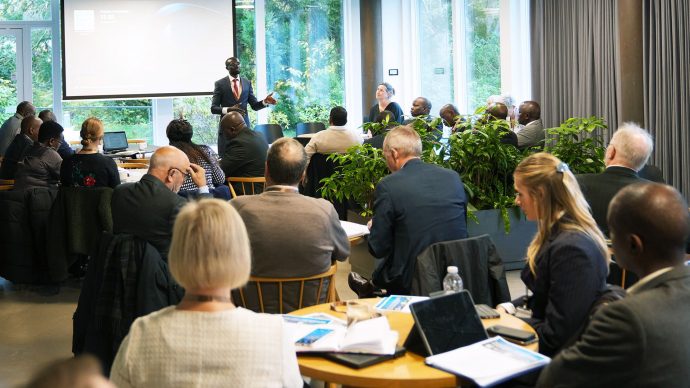KOMMENTAR
If We Falter, We Will Lose the Wild Tiger
The roar of a wild tiger could soon be replaced by silence if the global summit fails to target the illicit demand driving its decline
By Robert B. Zoellick
President of the World Bank Group
As published on the Guardian online on Sunday, November 21, 2010
As Rudyard Kipling’s The Jungle Book begins, Mother and Father Wolf are troubled to learn that the tiger, “Shere Khan, the Big One”, has shifted his hunting grounds. The wolves fear the tiger’s presence in their midst may anger local villagers and cause man to seek revenge, threatening animal and land alike.
In 1894, when this collection of short stories was published, 100.000 tigers roamed the wild. Today, that number has plummeted to 3.200. And Shere Khan’s hunting grounds – the habitats in which all wild tigers live – are vanishing.
Tigers now occupy only 7 per cent of their original range. We are fast approaching a time when the roar of a tiger in the wild will be replaced forever by silence.
The extinction of the wild tiger would be an extraordinary tragedy. It would be a tragedy not only because of the appalling loss of these animals, but also because it would pose a threat to the health of the habitats in which they live and the prey that support them.
Tigers are an umbrella species – their health reflects the health of surrounding plants and animals.
We know what is causing the decline in numbers of wild tigers: illegal poaching; illegal wildlife trade; loss of habitat through conversion, encroachment, and land degradation. But the good news is we have also found that tiger populations can recover.
For them to do so, we have to target the illicit demand that drives tiger decline – because the illegal trade in wildlife is nothing more than organised crime. In fact, it’s the third largest form of organised crime, after the arms and drugs trades.
MÅLET: 7.000 TIGRE I 2022
This year, 2010, is the Year of the Tiger.
From 21-24 November, the global tiger summit in St Petersburg, Russia, will bring together the 13 countries that still have wild tigers, along with the World Bank Group, Smithsonian Institution, the WWF, National Geographic and other conservation and development partners and stakeholders.
The summit will be an historic occasion, where world leaders will undertake specific commitments with the goal of doubling tiger numbers to 7.000 by 2022, the next Year of the Tiger, and protecting their habitats.
Around the globe, individuals, governments, the World Bank Group, the Global Environment Facility and conservation groups have already invested considerable resources in tiger protection – and there have been successes.
The Amur, or Siberian tiger, has been brought back from the brink of extinction through the combined anti-poaching and conservation efforts of the Russian government, local and international NGOs and local communities in the Russian far east.
The Terai Arc Landscape project in Nepal offers another possible model for how human communities can coexist alongside core tiger habitats.
For this project, conservationists in the public and private sectors are working together to restore, reconnect, and manage 11 national parks into one continuous corridor of protected areas to benefit humans and wildlife.
These examples show that tiger populations can recover if habitats can be protected, within and outside protected areas, and if poaching of tigers and their prey is stopped.
POSITIVE SKRIDT, MEN KRYBSKYTTERNE HÆRGER
But while there are some important successes, the bigger picture remains bleak. Habitat degradation and fragmentation continue. Conservation efforts are continually undermined by poaching and illegal trade. Wild tigers are slipping away.
Saving the wild tiger is a global challenge. Just as with many of the other challenges of sustainability – such as climate change, pandemic disease, or poverty – the crisis facing tigers overwhelms local capabilities and transcends national boundaries.
This is a problem that cannot be handled by individual governments alone. In order to succeed, it will take a partnership of national governments and organisations pooling their expertise and passion.
Central to all these efforts, however, must be strong ownership of the conservation agenda by tiger range countries, because it is those who live with the tiger who will determine the great cats’ fate.
This is why it is critical to engage and empower these governments’ leaders, bring them together on a single platform of action and develop national policies tailored to individual country needs. This is why the global tiger summit offers the chance to be a game-changer in contrast to previously failed efforts.
The task will not end in St Petersburg. We will need to ensure robust implementation and regular stocktaking in the next three to five critical years to ensure success. Success would mark a turning point, where countries secure wildlife and biodiversity, and their very valuable but fragile natural wealth.
TIGERENS SKÆBNE ER NATURENS SKÆBNE
The plight of tigers casts a spotlight on the broader biodiversity crisis that often goes unnoticed amid the many actors debating climate change. If we falter, the tigers’ loss would be a dramatic indication of our failure to safeguard biodiversity and balanced development.
By working to save the wild tigers, we’re protecting a majestic animal so it can continue to stir our imagination, just as it did in Kipling’s day. At the same time, we’re arousing attention about all the biodiversity of our planet.
In Kipling’s story, Mowgli, the man-cub, was rescued from a tiger. It is critical that we come together now to save the last of the great wild tigers – from man.
Kilde: www.worldbank.org














